一、基本概念
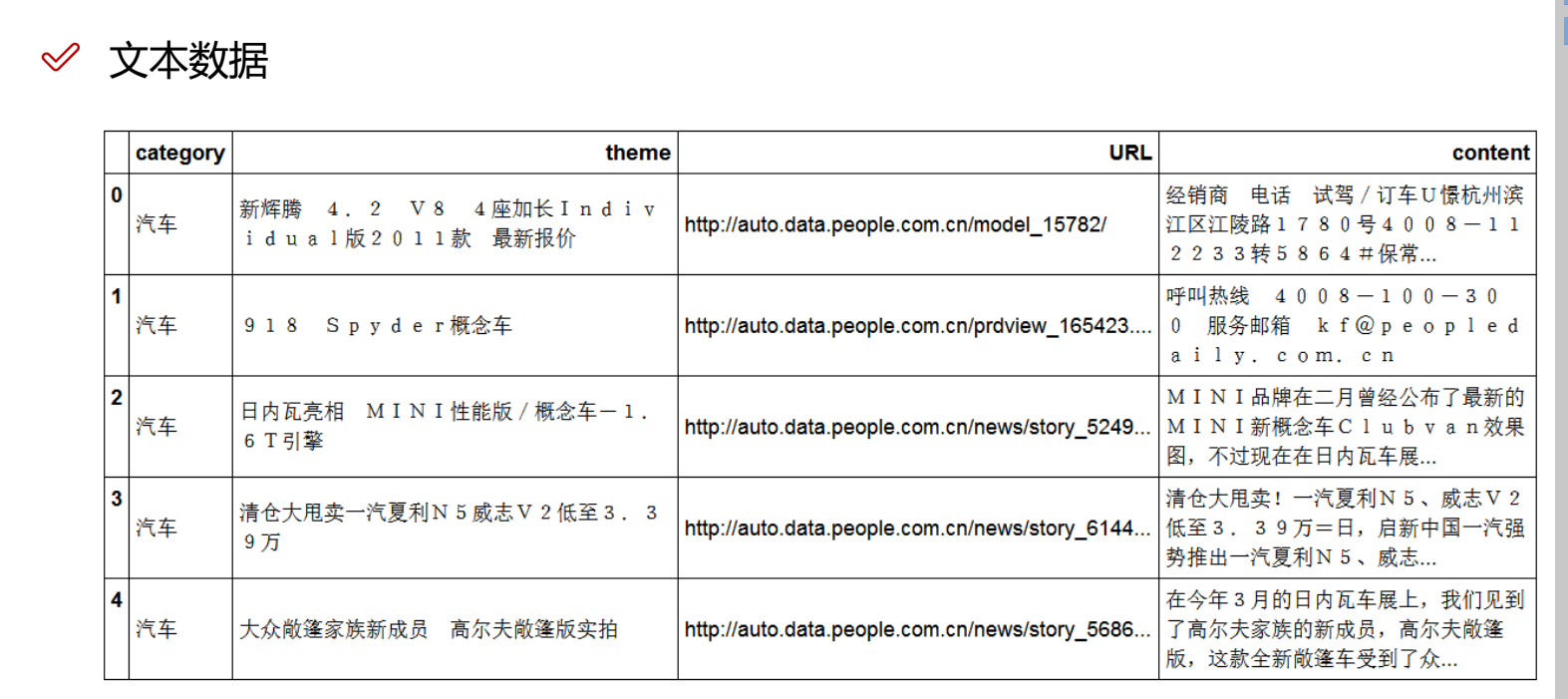
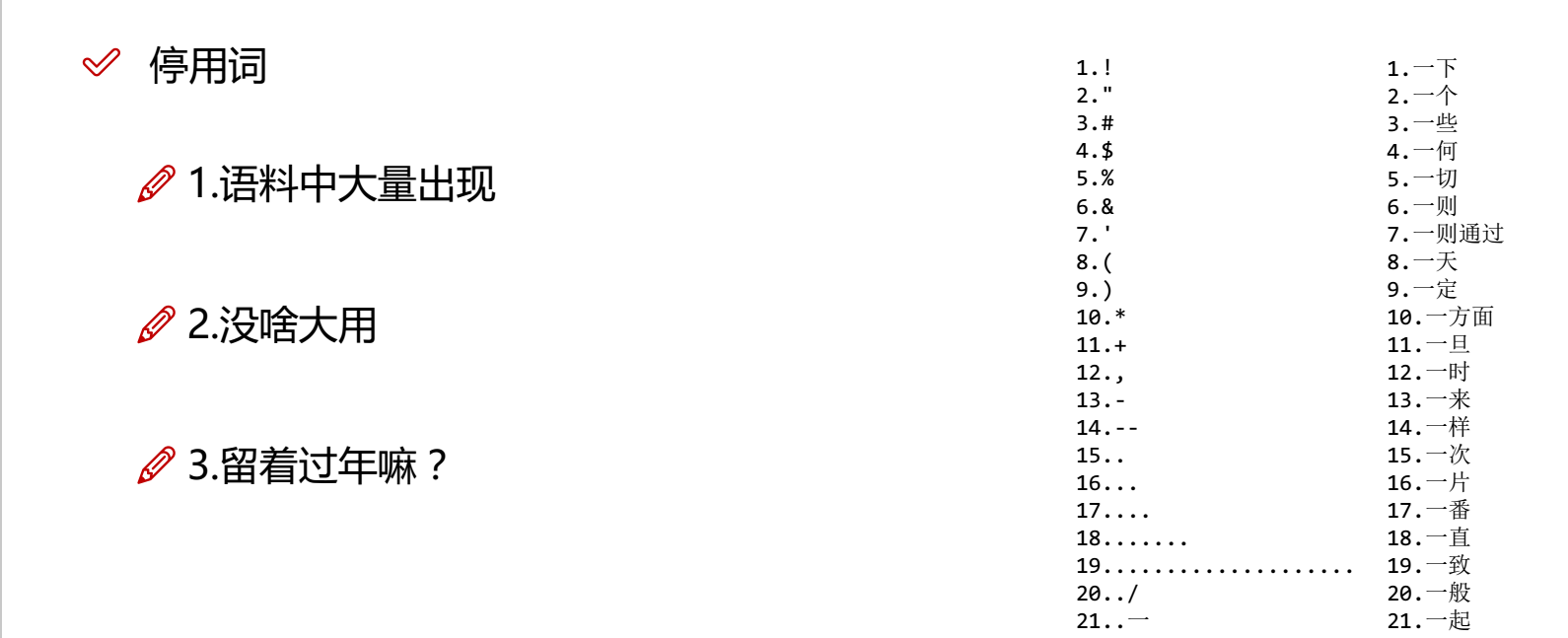
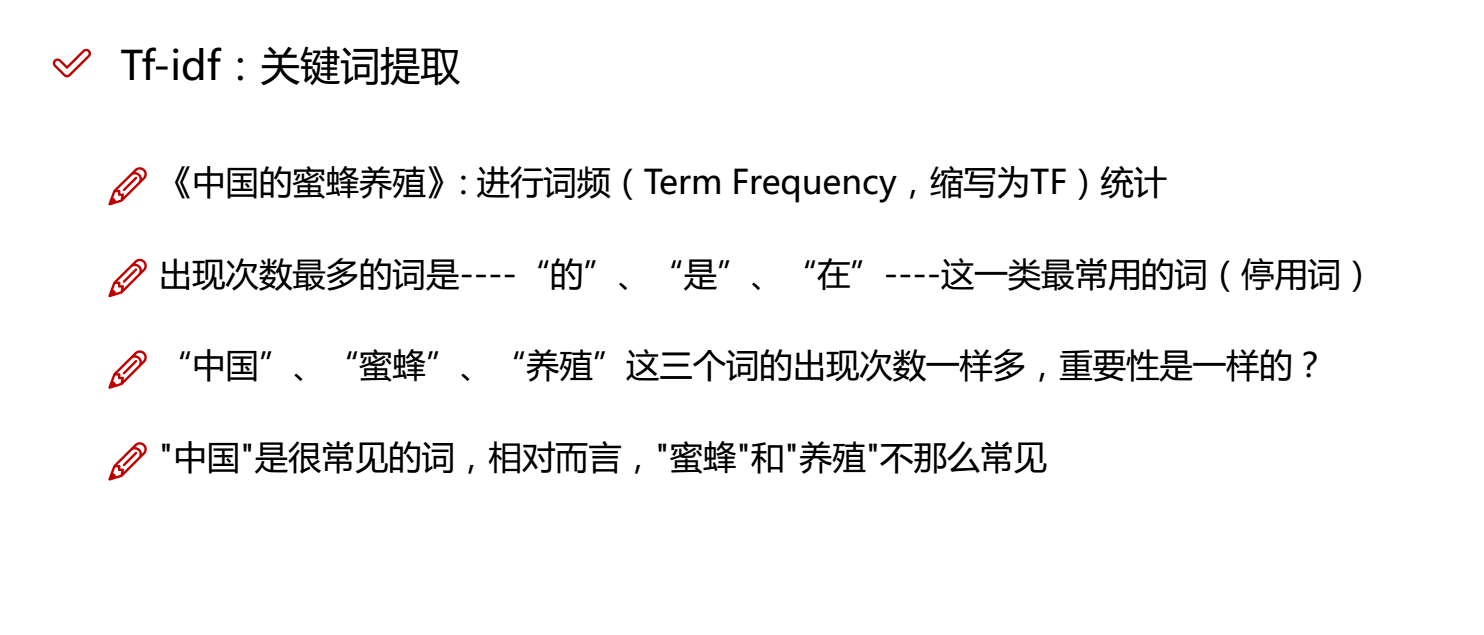
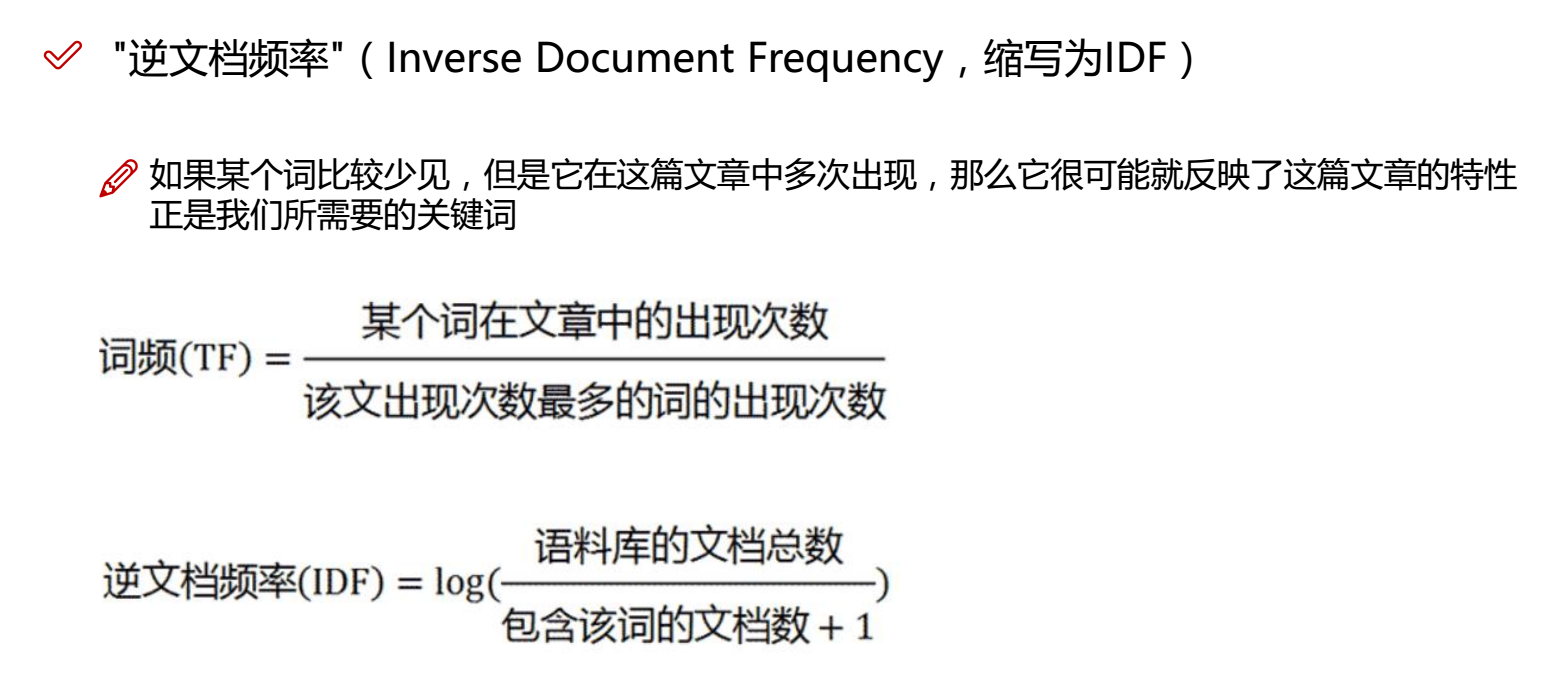

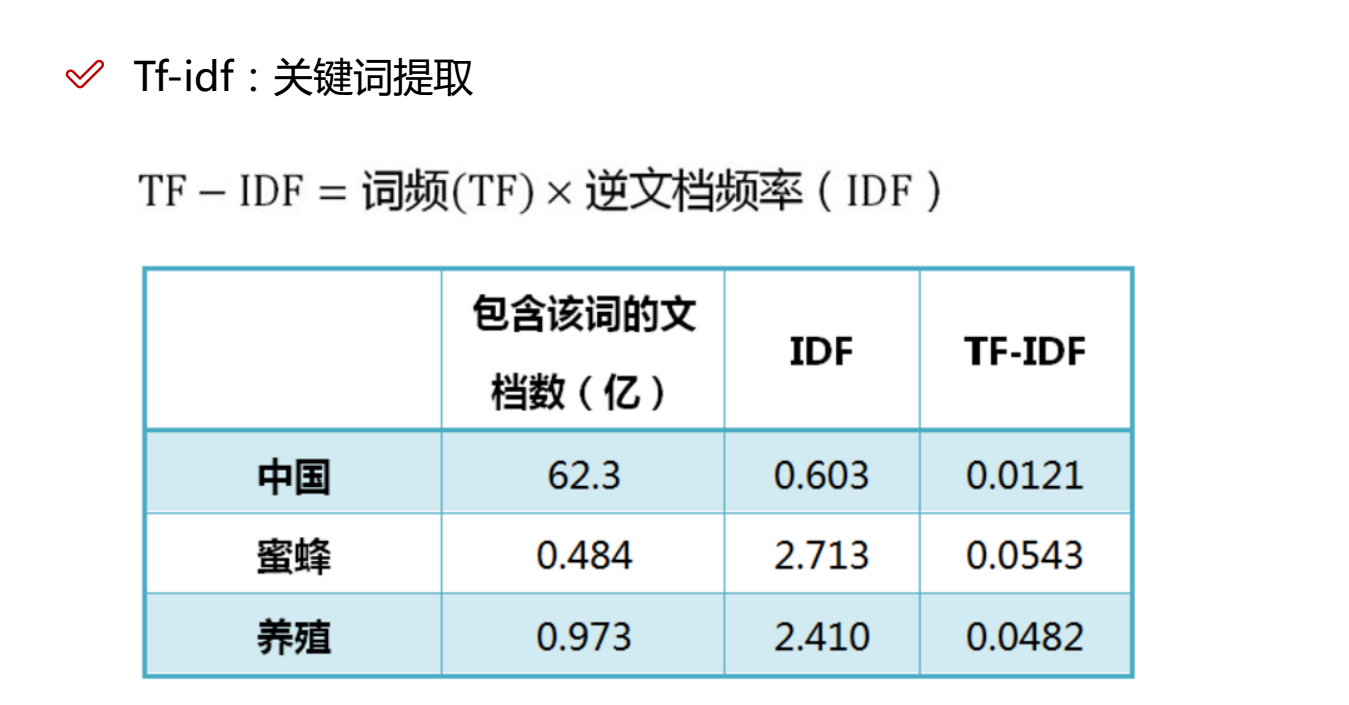

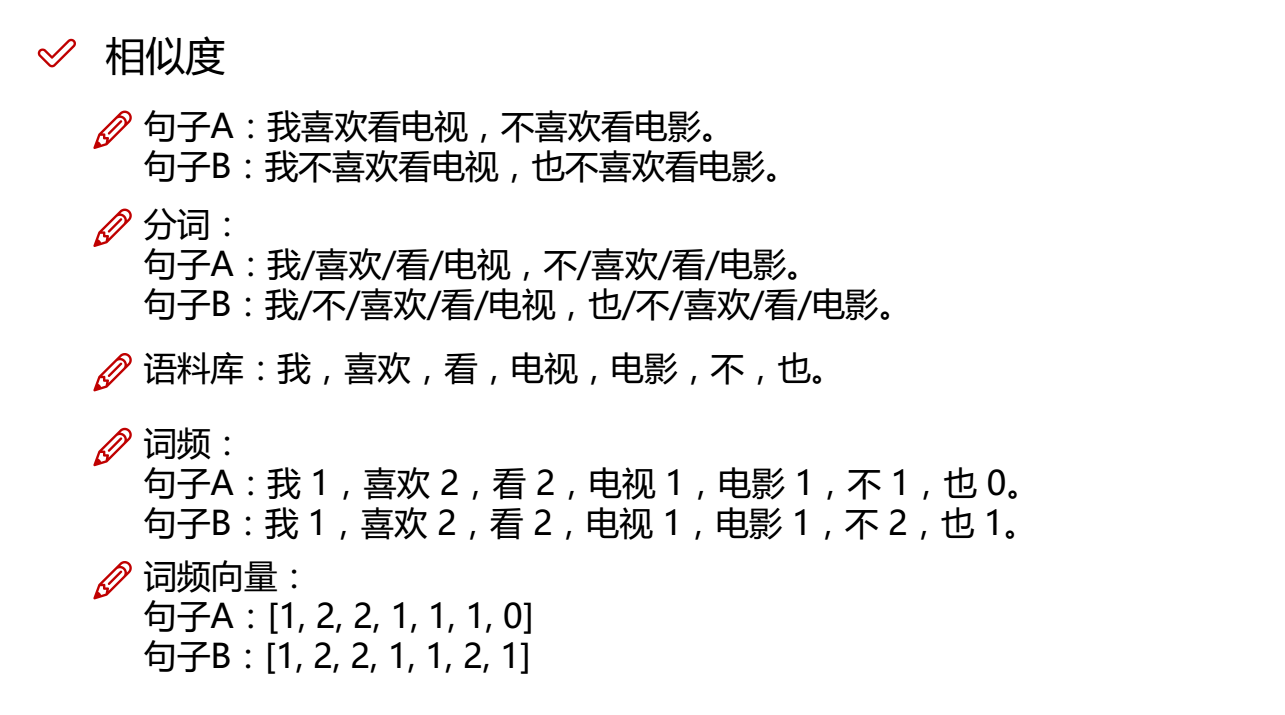
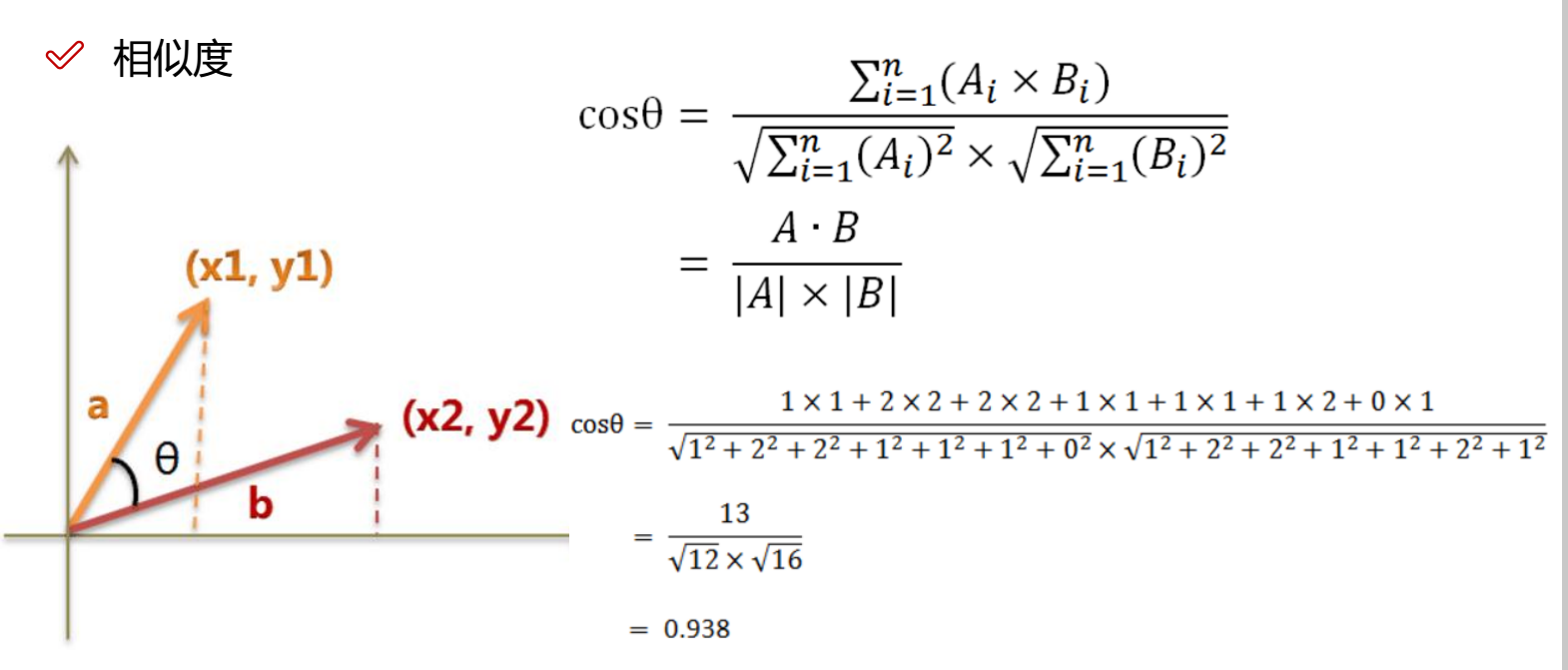
二、python代码实现新闻分类
# coding: utf-8
import pandas as pd
import jieba
import numpy
import jieba.analyse
from wordcloud import WordCloud
import matplotlib.pyplot as plt
import matplotlib
from gensim import corpora, models, similarities
import gensim
from sklearn.model_selection import train_test_split
from sklearn.feature_extraction.text import CountVectorizer
from sklearn.naive_bayes import MultinomialNB
# 1、加载数据
df_news = pd.read_table('./data/val.txt',names=['category','theme','URL','content'],encoding='utf-8')
df_news = df_news.dropna()
print(df_news.head())
print(df_news.shape)
# 2、结巴分词
content = df_news.content.values.tolist()
print (content[1000])
content_S = []
for line in content:
current_segment = jieba.lcut(line)
if len(current_segment) > 1 and current_segment != 'rn': #换行符
content_S.append(current_segment)
print(content_S[1000])
df_content=pd.DataFrame({'content_S':content_S})
print(df_content.head())
# 3、去掉停用词
stopwords=pd.read_csv("stopwords.txt",index_col=False,sep="t",quoting=3,names=['stopword'], encoding='utf-8')
print(stopwords.head(20))
contents = df_content.content_S.values.tolist()
stopwords = stopwords.stopword.values.tolist()
def drop_stopwords(contents, stopwords):
contents_clean = []
all_words = []
for line in contents:
line_clean = []
for word in line:
if word in stopwords:
continue
line_clean.append(word)
all_words.append(str(word))
contents_clean.append(line_clean)
return contents_clean, all_words
contents_clean, all_words = drop_stopwords(contents, stopwords)
df_content=pd.DataFrame({'contents_clean':contents_clean})
print(df_content.head())
# 4、词频统计并绘图
df_all_words=pd.DataFrame({'all_words':all_words})
print(df_all_words.head())
words_count=df_all_words.groupby(by=['all_words'])['all_words'].agg({"count":numpy.size})
words_count=words_count.reset_index().sort_values(by=["count"],ascending=False)
print(words_count.head())
matplotlib.rcParams['figure.figsize'] = (10.0, 5.0)
wordcloud=WordCloud(font_path="./data/simhei.ttf",background_color="white",max_font_size=80)
word_frequence = {x[0]:x[1] for x in words_count.head(100).values}
wordcloud=wordcloud.fit_words(word_frequence)
plt.imshow(wordcloud)
plt.axis('off')
plt.show()
#5、 TF-IDF提取关键词
index = 2400
print (df_news['content'][index])
content_S_str = "".join(content_S[index])
print (" ".join(jieba.analyse.extract_tags(content_S_str, topK=5, withWeight=False)))
# 6、LAD主题建模
dictionary = corpora.Dictionary(contents_clean)
corpus = [dictionary.doc2bow(sentence) for sentence in contents_clean]
lda = gensim.models.ldamodel.LdaModel(corpus=corpus, id2word=dictionary, num_topics=20) #类似Kmeans自己指定K值
print(lda.print_topic(1, topn=5))
for topic in lda.print_topics(num_topics=20, num_words=5):
print (topic[1])
#7、 贝叶斯分类
df_train=pd.DataFrame({'contents_clean':contents_clean,'label':df_news['category']})
print(df_train.tail())
print(df_train.label.unique())
label_mapping = {"汽车": 1, "财经": 2, "科技": 3, "健康": 4, "体育":5, "教育": 6,"文化": 7,"军事": 8,"娱乐": 9,"时尚": 0}
df_train['label'] = df_train['label'].map(label_mapping)
print(df_train.head())
x_train, x_test, y_train, y_test = train_test_split(df_train['contents_clean'].values, df_train['label'].values, random_state=1)
print(x_train[0][1])
words = []
for line_index in range(len(x_train)):
try:
words.append(' '.join(x_train[line_index]))
except:
print (line_index)
print(words[0] )
print (len(words))
vec = CountVectorizer(analyzer='word', max_features=4000, lowercase = False)
vec.fit(words)
classifier = MultinomialNB()
classifier.fit(vec.transform(words), y_train)
test_words = []
for line_index in range(len(x_test)):
try:
#x_train[line_index][word_index] = str(x_train[line_index][word_index])
test_words.append(' '.join(x_test[line_index]))
except:
print (line_index)
print(test_words[0])
print(classifier.score(vec.transform(test_words), y_test))
三、展示部分运行结果
词频统计绘图
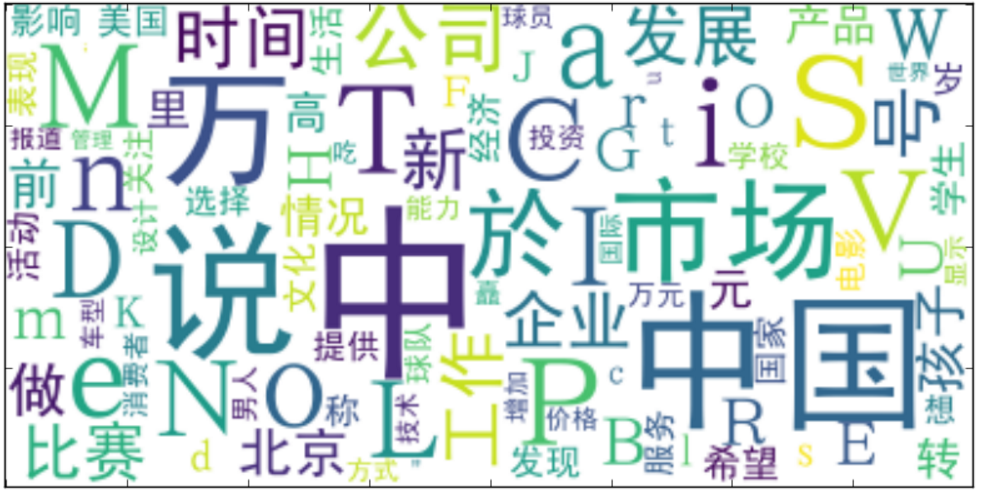
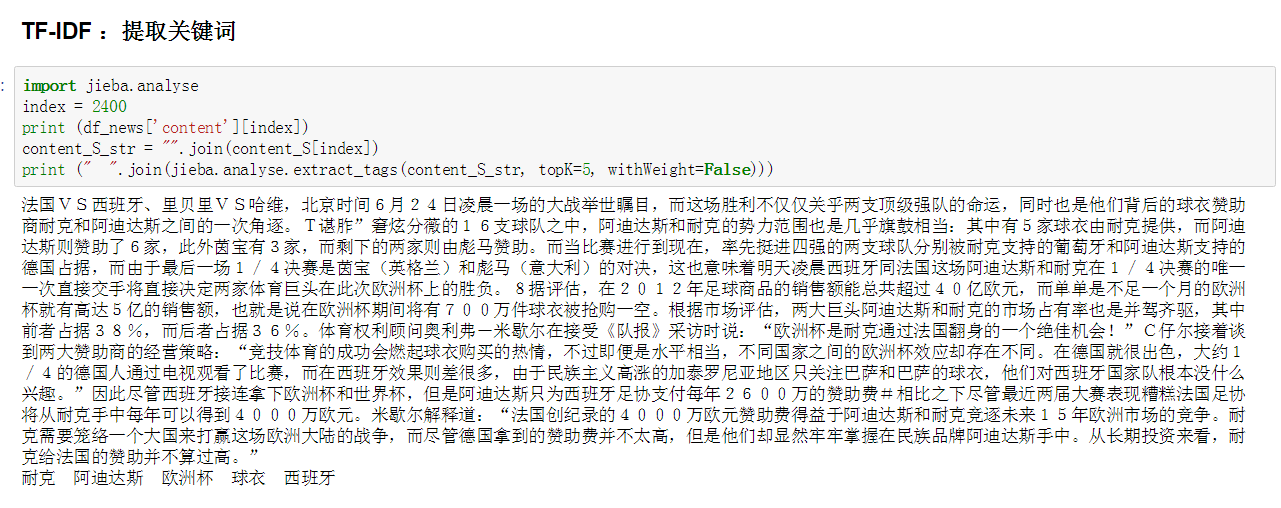
 同乐学堂
同乐学堂
 微信扫一扫,打赏作者吧~
微信扫一扫,打赏作者吧~






